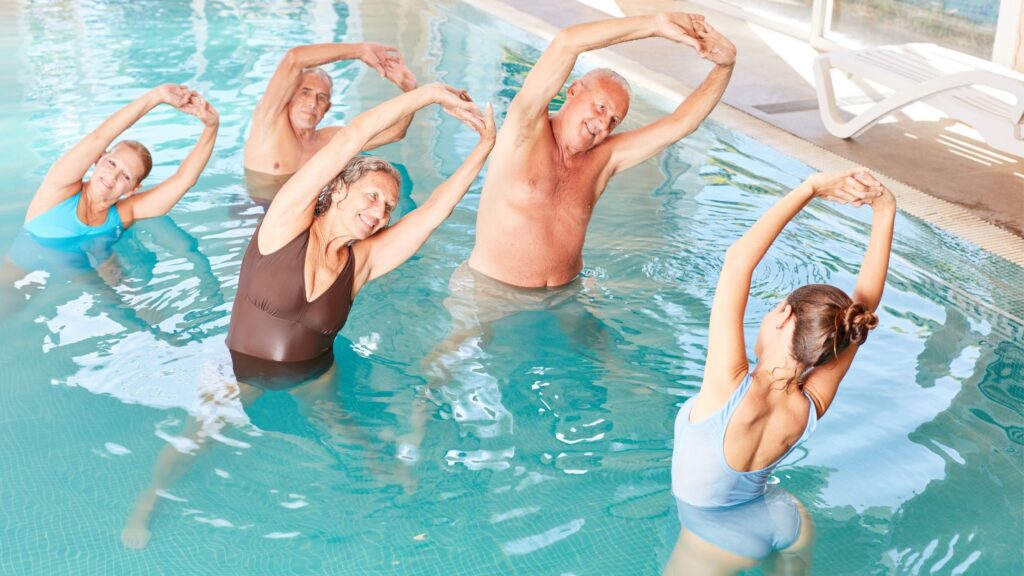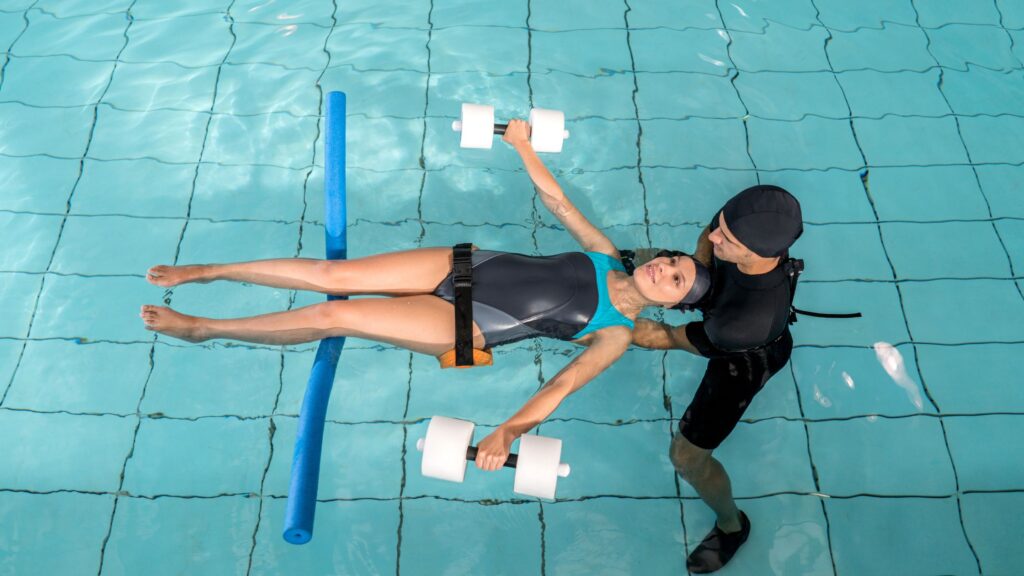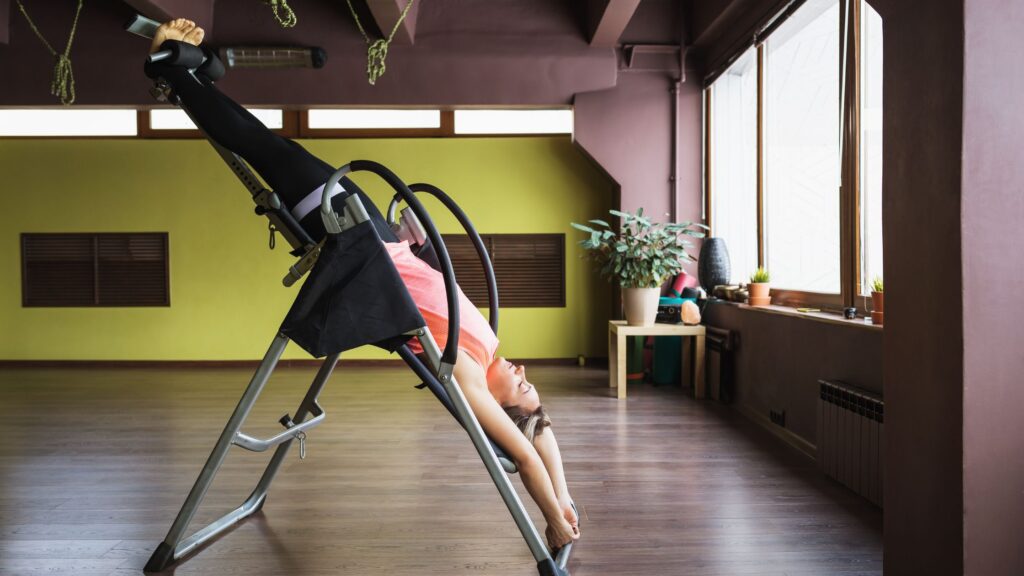Are you tired of living with chronic back pain? Do you find it hard to perform daily activities due to low back pain intensity? If so, hydrotherapy might be the solution you need.
Hydrotherapy is a treatment option that has gained popularity in recent years for its effectiveness in alleviating pain levels and improving lumbar flexion in back patients. It involves using warm water in hydrotherapy pools or tubs to provide therapy for various conditions, including back pain.
Physical therapy and physiotherapy often incorporate hydrotherapy as part of their treatment regimen. The warm water in hydrotherapy pools helps relax muscles and improve blood circulation, making it an effective treatment for chronic pain and low back pain intensity.
Hydrotherapy sessions are designed to target the lumbar spine area, which is often the source of back problems. The buoyancy of the water reduces pressure on joints and muscles, allowing patients to exercise without experiencing discomfort.
If you’re considering hydrotherapy for your back pain, it’s important to consult with a healthcare professional first. They can help determine if this type of therapy is right for you based on your specific condition and medical history.
In this blog post, we’ll explore everything you need to know about hydrotherapy for back pain. From how it works to its benefits and what to expect during a session, we’ll cover all the essential information you need before diving into this form of therapy.
So let’s get started!

Benefits of Hydrotherapy for Back Pain
Hydrotherapy has been used as a therapeutic treatment for centuries, and it is now gaining popularity as a natural remedy for back pain. Hydrotherapy, also known as water therapy or aquatic therapy, involves the use of water to relieve pain and promote healing. It is an effective way to manage back pain without relying on medication or invasive procedures.
Hydrotherapy helps to reduce back pain
One of the primary benefits of hydrotherapy for back pain is that it helps to reduce discomfort. The warm water used in hydrotherapy can help to increase blood flow and circulation, which can ease muscle tension and stiffness. This can provide immediate relief from back pain symptoms.
The buoyancy of the water reduces pressure on the spine and joints, which can further alleviate pain. By reducing stress on the body, hydrotherapy allows patients with chronic back pain to exercise more comfortably than they would be able to on land.
It improves flexibility and range of motion
Hydrotherapy can also improve flexibility and range of motion in individuals with back pain. Water provides resistance that challenges muscles without putting undue stress on joints or ligaments. This makes it easier for patients with limited mobility to stretch their muscles without risking further injury.
Through regular hydrotherapy sessions, patients may experience increased flexibility in their spine, hips, and other areas that are commonly affected by back pain. Improved mobility can lead to better posture and reduced risk of future injuries.
Hydrotherapy aids in muscle relaxation and tension relief
Another benefit of hydrotherapy for back pain is its ability to aid in muscle relaxation and tension relief. Warm water increases blood flow which helps relax muscles while reducing inflammation around them.
The heat from warm water also promotes endorphin release – a natural chemical produced by our bodies that acts like a natural analgesic (painkiller). Endorphins help reduce sensitivity to painful stimuli while inducing feelings of euphoria.
It promotes better circulation and blood flow
Hydrotherapy can also promote better circulation and blood flow throughout the body. The warm water used in hydrotherapy causes blood vessels to dilate, which allows for increased blood flow to areas of the body that are affected by back pain. This increased circulation can improve healing times and reduce inflammation around affected areas.
Hydrotherapy can help lower blood pressure, which is beneficial for individuals with hypertension or other cardiovascular issues. By improving overall cardiovascular health, hydrotherapy may indirectly benefit individuals with chronic back pain.
Hydrotherapy can help to improve overall physical function
Finally, regular hydrotherapy sessions may lead to improved physical function in individuals with back pain. The combination of reduced pain, increased flexibility, and improved muscle relaxation can allow patients to perform daily activities more easily than they would be able to otherwise.
This improvement in physical function can have a positive impact on mental health as well. Patients who feel more capable of performing everyday tasks may experience less anxiety or depression related to their condition.
Common Mistakes to Avoid in Hydrotherapy
Heavy Loads Can Worsen Back Pain During Hydrotherapy
One mistake that people often make during hydrotherapy is lifting heavy weights or using heavy equipment. While resistance training can be beneficial for strengthening muscles and improving posture, it can also put excessive strain on the back if not done properly. This is especially true in water, where the added resistance can make even light weights feel heavy.
To avoid worsening your back pain during hydrotherapy, it’s important to start with light weights and gradually increase as you build strength. You should also work with a qualified therapist who can ensure proper form and technique.
Understanding the Underlying Causes of Back Pain Is Crucial for Effective Hydrotherapy
Another mistake that people often make when undergoing hydrotherapy for back pain is failing to address the underlying causes of their condition. Back pain can be caused by a variety of factors, including poor posture, muscle imbalances, herniated discs, and spinal stenosis.
If you don’t address these underlying issues through targeted exercises and stretches, your back pain may persist even after completing hydrotherapy sessions. To get the most out of your hydrotherapy sessions, it’s important to work with a therapist who understands the root causes of your back pain and can develop a customized treatment plan tailored to your needs.
Avoiding Bias Towards Certain Hydrotherapy Techniques Can Help Prevent Further Injury
There are many different types of hydrotherapy techniques available for treating back pain, including swimming, water aerobics, and aquatic physical therapy. However, some people may have a bias towards certain techniques based on their personal preferences or past experiences.
While it’s important to find a hydrotherapy technique that you enjoy and feel comfortable with, it’s also important to keep an open mind and explore different options. Certain techniques may be more effective for your specific condition than others, so it’s worth trying out different approaches to see what works best for you.
Neglecting Proper Form and Technique During Hydrotherapy Can Lead to More Back Pain
Finally, neglecting proper form and technique during hydrotherapy can actually lead to more back pain. This is because poor form can put excessive strain on the back muscles and joints, leading to further injury.
To avoid this mistake, it’s important to work with a qualified therapist who can teach you proper form and technique for each exercise or movement. You should also listen to your body and stop any movements that cause pain or discomfort.
Guide to the Best Hydrotherapy Exercises for Back Pain
Hydrotherapy exercises are a great way to alleviate back pain. They can help to strengthen the muscles in your back, improve flexibility, and relieve pressure on your spine. In this guide, we’ll discuss some of the best hydrotherapy exercises for back pain.
Water Walking
Water walking is a low-impact exercise that can be done in a pool or other body of water. It involves walking through the water with your arms and legs moving in a natural walking motion. This exercise can help to strengthen the muscles in your legs and lower back while also improving your balance and coordination.
To perform water walking, start by standing in waist-deep water with your feet shoulder-width apart. Begin walking forward through the water, lifting each foot off the bottom of the pool as you take each step. Move your arms naturally as if you were walking on land.
Swimming
Swimming is another low-impact exercise that’s great for relieving back pain. It’s an excellent cardiovascular workout that strengthens all of the major muscle groups in your body, including those in your back.
When swimming for back pain relief, focus on using strokes that engage your upper and lower back muscles. The breaststroke is an excellent choice since it requires you to use both your arms and legs while engaging these muscle groups.
Water Aerobics
Water aerobics is a fun and effective way to get a full-body workout without putting stress on your joints or spine. This type of exercise involves performing various movements like jumping jacks, leg lifts, and arm circles while standing or floating in water.
The buoyancy of the water provides resistance against which you can work out without putting undue strain on any one part of your body. Water aerobics classes are often available at local gyms or community centers.
Aqua Jogging
Aqua jogging is another low-impact exercise that’s great for relieving back pain. It involves jogging in place while standing in water. The resistance of the water provides a challenging workout for your legs and core muscles, helping to strengthen your lower back.
To perform aqua jogging, stand in chest-deep water with your feet shoulder-width apart. Begin jogging in place, lifting each foot off the bottom of the pool as you take each step. Move your arms naturally as if you were jogging on land.
Working with a Professional
While hydrotherapy exercises can be very effective at relieving back pain, it’s important to work with a qualified professional to develop an exercise program that’s tailored to your specific needs. A physical therapist or other healthcare professional can help you design an exercise program that targets the muscles and areas of your back that need the most attention.
When working with a professional, be sure to communicate any concerns or limitations you may have so they can make adjustments accordingly. With the right guidance and support, hydrotherapy exercises can help you manage your back pain and improve your overall quality of life.
Aqua Therapy Exercises for Back Pain Recovery
Back pain is a common ailment that affects millions of people worldwide. It can be caused by several factors, including poor posture, muscle strain, and injuries. While there are various treatment options available, hydrotherapy has been proven to be an effective way to alleviate back pain. Hydrotherapy involves the use of water for therapeutic purposes, and one of the most popular forms of hydrotherapy is aqua therapy exercises.
Alleviates Pressure on the Spine
One of the main benefits of aqua therapy exercises for back pain recovery is that it reduces pressure on the spine. When you immerse yourself in water, your body becomes buoyant, which means that you weigh less in water than on land. This buoyancy helps to reduce stress on your joints and muscles, allowing you to move more comfortably without experiencing pain or discomfort.
Moreover, when you perform exercises in water, your body experiences resistance from the water’s viscosity. This resistance helps to strengthen your muscles while reducing pressure on your spine. As a result, aqua therapy exercises can help improve spinal alignment and alleviate back pain caused by poor posture or spinal misalignment.
Eases Exercise Performances and Reduces Injury Risk
Another benefit of aqua therapy exercises is that they make exercise easier to perform while reducing the risk of injury. The buoyancy provided by water makes it easier for individuals with limited mobility or chronic pain conditions to perform low-impact exercises without putting undue stress on their joints or muscles.
Performing exercises in water provides a cushioning effect that reduces impact forces associated with land-based activities such as running or jumping. This cushioning effect minimizes joint compression and reduces the risk of injury during exercise.
Improves Flexibility Strength Overall Physical Function
Aqua therapy exercises also help improve flexibility, strength and overall physical function. Water provides natural resistance which challenges your muscles more than air-based workouts like yoga or Pilates. This resistance helps to strengthen your muscles and increase your range of motion, which can improve flexibility and overall physical function.
Moreover, water provides a low-impact environment that is gentle on the joints, making it an ideal form of exercise for individuals with arthritis or other chronic pain conditions. Aqua therapy exercises can help improve joint mobility while reducing pain and stiffness associated with these conditions.
Resistance and Floatation Aids in Aquatic Therapy

Aquatic therapy, specifically hydrotherapy, has been proven to be an effective method for treating back pain. In addition to the benefits mentioned in the previous sections, resistance and floatation aids can be used to enhance the effectiveness of hydrotherapy exercises.
Resistance aids such as water dumbbells or paddles can increase muscle strength and improve posture. These aids provide extra resistance against the water, which forces your muscles to work harder than they would on land. This increased resistance helps build strength and endurance without putting excessive strain on your back.
Floatation aids such as pool noodles or kickboards can help support your body weight in the water, reducing pressure on your spine. This allows you to perform exercises with less pain or discomfort while still receiving the benefits of hydrotherapy. Floatation aids can help improve balance and stability by providing a stable surface for you to hold onto during exercises.
To get the most out of hydrotherapy for back pain using resistance and floatation aids, it is important to avoid common mistakes such as overexertion or improper form. Consult with a professional therapist before starting any aquatic therapy program to ensure that you are performing exercises correctly and safely.



